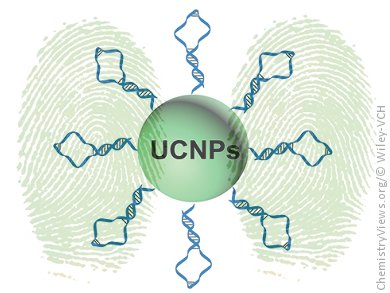Sometimes fingerprints are visible, however, most of the time they are not and thus imaging is required for their identification. But what is the best way to image latent fingerprints?
Quan Wan and co-workers, Wuhan University, China, realized that standard photoluminescence techniques have some disadvantages, namely background fluorescence and limited generality, as the reagents used bind only to compounds that are doped into prints. The researchers designed a system comprising upconversion nanoparticles (UCNPs) that can be excited with near-infrared (NIR) light, which does not result in background fluorescence.
As lysozome is contained in sweat and is thus always present in fingerprints, the nanoparticles are conjugated to a lysozome-binding aptamer (LBA). The nanoparticles thus bind to the fingerprint ridges and can be visualized without any interference from background fluorescence. The team extended their method by replacing the LBA with a cocaine-binding aptamer, which allows fingerprints containing cocaine to be detected.
This technique may be useful in applications such as forensics and medical diagnostics.
- Near-Infrared-Light-Mediated Imaging of Latent Fingerprints based on Molecular Recognition,
Jie Wang, Ting Wei, Xinyang Li, Binhao Zhang, Jiaxi Wang, Chi Huang, Quan Yuan,
Angew. Chem. Int. Ed. 2014.
DOI: 10.1002/anie.201308843



